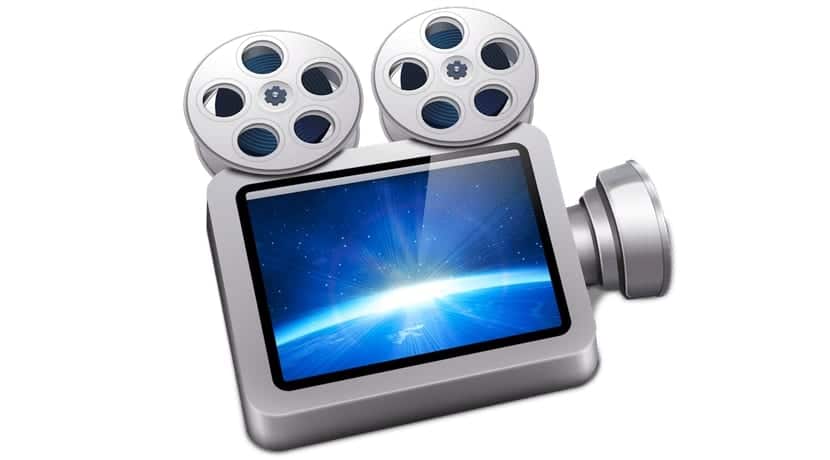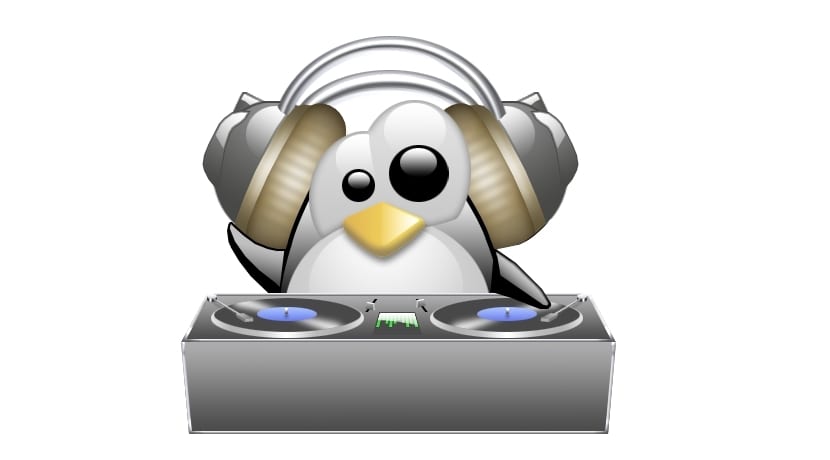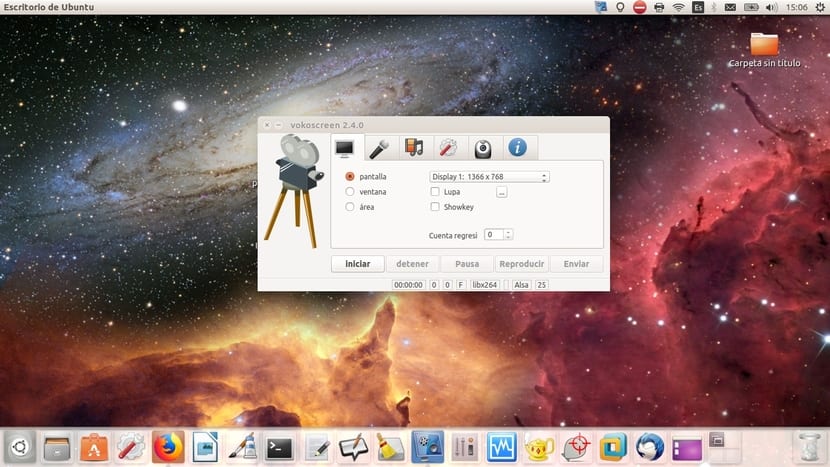
There are many ways to contribute to the free software movement, not just by adding lines of source code to projects. We can also collaborate by translating software, reporting problems that we find to the development communities so that they can solve them, spreading news and tutorials as we do in this blog, etc. And one of the most fashionable ways to spread tutorials is taking screenshots or recording what happens in our desktop and terminal environment, in order to provide much more direct and practical information.
In addition, the youtuber phenomenon is going strong, more and more people are getting into this world, and it seems to me something interesting to deal with, especially now that the world of video games on Linux is flourishing so much, and surely many users emerge Linux gamers who are eager to record their games to post them on the famous streaming platform, showing their achievements, reviews, etc. So if you don't know how to capture what happens on your PC, in this tutorial we are going to show the best alternatives you have and how to do it ...
Previous preparations:

Before starting to install any program to screencast or capture what happens on the screen, I advise you to follow these tips, or else you you will run into some problems which are usually quite annoying and on many occasions, if you are a newer user you will not even know what the origin is. These problems are mainly rooted in the Linux graphics stack or audio stack, that is, in all the drivers and subsystems that handle graphics and audio processing in our distro or operating system.
In general, most popular distros already configure this stack quite well and have all the necessary drivers so that everything work properly from the start. However, I recommend that you pay special attention to those 100% free distros, those that eliminate the famous binary blobs, since something may not work well in them, although it should not, in principle the most popular GPUs and sound cards should work seamlessly with free drivers. But remember also that these 100% free distros can bring other problems when it comes to multimedia, and that is that they do not have certain proprietary codecs that are necessary to process the audio and video of your recordings.
And if you are a more advanced user and you have decided to build your own distro from scratch or you have opted for distros like Arch Linux, Gentoo, Slackware, etc., which tend to come somewhat more "bare" in terms of software and you have to install it to your liking, remember not Forget about packages such as PulseAudio, ALSA, codec packages, etc., since in my experience they tend to be the focus of most problems when working with this type of program that we present below.
For example, one of the stupidest problems I've run into is that it wasn't recording any sound at all, and I just went to configure properly ASLA and PulsAudio since there were some channels or audio media with the sound lowered to the limit. Or we can even modify the equalizer of the system to reduce background noise and improve quality.
How to record the graphical environment

There are many programs and alternatives To record the screen on your GNU / Linux distro, over the years that I have been working with Linux systems I have tried several. For example, one of the first ones I tried was RecordMyDesktop on my SUSE distro. Then I experimented with several programs to see which one I liked the most, among them Kazam and a long one, etc., but finally I have stayed with Vokoscreen (you can see it in the screenshot I made) with which I have made most of the recordings for training courses, etc.
Which one to choose again is a dilemma, but I'm going to introduce you to the list of programs to record screen best known:
- voko screen: in my opinion it is one of the best, simple but powerful, that is why it is my favorite and the one that I personally recommend. Supports various output video formats, allows audio recording, various recording options, Webcam support as well, etc. And I certainly see few cons ...
- Kazam: If you want something more minimalist, light and fast for beginners, maybe Kazam is what you are looking for. The drawbacks compared to Vokoscreen is the Webcam support and that it has fewer configuration options, which limits it a bit.
- SimpleScreenRecorder: it is a Qt-based app that lives up to its name, it is very simple. It is also optimized to work with machines with lower performance and the simplicity is related to its operation, since it has a lot of options to configure, which can be somewhat confusing in its graphical interface.
- recordMyDesktop: It is mainly a command line tool written in C to which two GUIs based on Qt4 and GTK have been added. It is very light and easy to use (you can even use it from the console with the recordmydesktop command), but forget about the support for WebCam and the audio and video formats of its competitors ...
- ScreenStudio: is a multiplatform recording app written in Java. More or less it has the same options as Vokoscreen or Kazam, and you can use it on any platform. The biggest problem is that it depends on Java RE 8.0.
- green recorder: it is a very simple and intuitive app, with many options and that can be a good alternative for Kazam or Vokoscreen, but it does not have support for recording WebCam. However, it has something that I find very interesting, and that is that it supports Wayland.
- Open Broadcaster Software Studio: also called OBS Studio is the most advanced system and with more options that you can find for Linux. You can record several scenes and switch between them, you have filters for the video, audio mixer, options for live streaming, etc. On the contrary, you must know well the terms and options that are handled to make an adequate configuration or you will lose yourself by its immense interface.
The installation of any of them should not be a problem, since there are DEB, RPM packages on the official websites of each of them, you will also find them in the repositories of your distro so that you can easily install them with yum, APT , zipper, etc. And there are even some, as in the case of Vokoscreen, that you can find in a binary package .run that you won't even have to install, just run and that's it!
As I said, I prefer Vokoscreen for its simplicity, and because it works quite well from what I have been able to verify. As you can see in its interface, you will find the screen options to record the entire screen, a single window or an area, even if you want the recording to follow your cursor, magnifying glass effect, a progressive countdown of seconds from which it begins to record, etc. On the other hand, you have the buttons for Start, Pause, and Stop the recording with which to manage it.
The following flange It is about the audio, and you can choose between using PulseAudio and ASLA, and if you have several microphones in the system, you can choose the ones you want to be in charge of capturing the sound. Another important tab is the multimedia one, where you can choose the video and audio format, the frames per second of capture (don't put too many if you don't have too powerful graphics), and the audio and video codecs (remember to select the more suitable). And the rest of the tabs are options of where to store, etc. Simple right?
How to record the terminal

So far as to how to record in graphic mode, but you should know that there are also grabbers for the terminal or console of your distro, something quite practical in the Unix world where you work so much from the terminal. In general, in this case they are simpler programs that need less preparation or prerequisites than the previous ones, so I doubt that you will have problems. And just like I did with the previous ones, I will list some of the best what are you going to find:
- ttystudio: it is a simple program that allows you to record what happens in the terminal, but it does so in the form of an animated GIF. Very useful to post the result later on webs. Without a doubt one of my favorites.
- ascinema: allows you to record and share what happens in the terminal sessions.
- shelr- Another program for boradcasting on plain text screens.
- show term: Another useful alternative to record.
- TermRecord: it can easily record the content of a terminal session and it allows to generate an HTML output, interesting to expose the results on webs.
- ttyrec: tool to record the terminal and includes tool for playback.
- tty2gif: another simple tool that, as its name suggests, allows you to record and export to GIF.
Yo I stay with ttystudio, that you can install it in a very simple way. But for this you must first install the npm package with the package manager you use. It is a package that allows you to manage JavaScript programs, as is the case, and once you have it, you will only have to do:
npm install -g ttystudio
If you do without the -g option, the installation will not be global. Once installed, you can open your terminal and start recording and export to GIF of the commands and everything that happens in your terminal with:
ttystudio micaptura.gif --log
You can find more information and its source code in its Github site...
Do not forget to leave your comments, with the doubts that arise, suggestions, other alternative programs that you know, experiences, etc. I hope this tutorial helps you and you can make good recordings in your distro ...
Nice post, very complete.
I'm going to test the options that you list to see if comments appear ...
Greetings, !
Thank you very much!
I just installed the vokoscreen on Debian Strecht, I'm doing great.
Thank you very much for the advice.
I have installed vokoscreen on Manjaro and I have problems recording screen. When doing the recording process everything goes well, but when I save and play the video I see that the system toolbar disappears intermittently, even in the same window that I select it disappears and appears quickly. Please if you know the cause of the problem, I ask for your support.
Thank you.
Hello, I would like to start capturing videos of new installations and solutions that I am correcting in Linux, but I have a doubt as to how I could capture the installation from scratch of a distribution including the part where I enter the BIOS and modify it to boot by usb.
What is the correct method to make a video like this, install to an empty partition from another partition with a linux and some capture program there or something like that?
Thanks in advance!
You have two alternatives. Either do the installation in a virtual machine and thus record by software or buy a device that allows you to record the video output of the PC.
Of course, if you have a good camera and a tripod, the BIOS part could be recorded from the monitor.
An absolutely perfect tutorial. Useful, effective, practical and, at the same time, easy to apply.
Thank you very much. Kind regards.